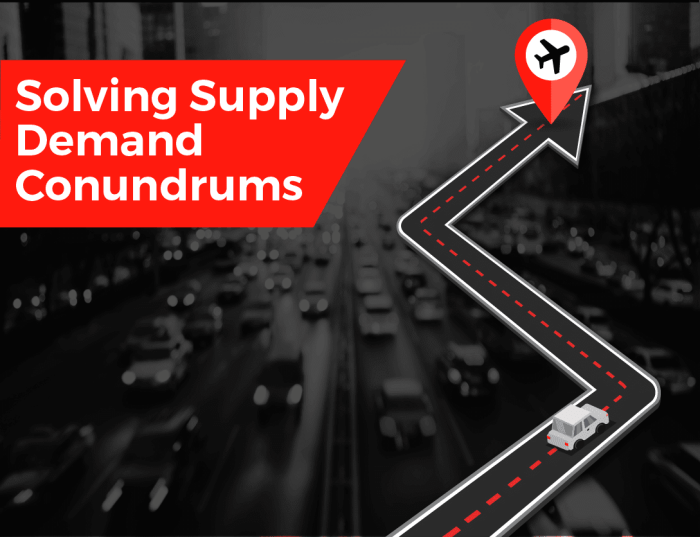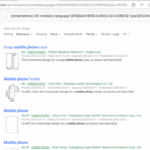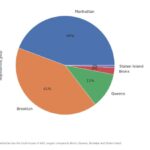How Uber uses data is a fascinating look into the modern business model. From the moment you open the app to request a ride, a complex network of data collection, analysis, and decision-making is at play. This process shapes everything from pricing strategies to route optimization, and even influences the development of new features. Understanding this intricate system is key to appreciating the sheer scale and impact of data-driven decision-making in the transportation industry.
This exploration delves into the various methods Uber employs to collect, store, and analyze data, highlighting the ethical considerations and impact on both drivers and passengers. We’ll examine the tools and techniques used, and the crucial role data plays in shaping the future of ride-sharing.
Data Collection Methods
Uber’s success hinges on its ability to process and utilize vast amounts of data. This data fuels everything from dynamic pricing to route optimization, ensuring a smooth and efficient ride-hailing experience. Understanding the methods behind data collection is crucial to appreciating the intricate workings of this global platform.
Data Sources
Uber gathers information from a multitude of sources, each contributing a unique piece to the overall picture. User activity, ride details, and driver information form the core data sets, while external factors provide a broader context for the service.
User Activity Data
User activity is a rich source of data, encompassing a wide array of interactions. This includes details such as app usage patterns, preferred payment methods, and frequent pickup and drop-off locations. Understanding user preferences helps tailor the experience to individual needs.
Ride Details Data
Ride details are crucial for optimizing the service and identifying trends. This data includes pickup and drop-off points, estimated travel time, actual travel time, payment information, and ratings. Analyzing this data allows Uber to refine its algorithms and improve service reliability.
Driver Information Data
Driver information provides insight into driver performance and availability. Data such as driver location, vehicle type, and driver ratings helps Uber match riders with appropriate drivers and manage driver networks effectively.
External Factors Data
External factors, such as traffic conditions, weather patterns, and local events, can significantly impact ride-hailing demand. Collecting and analyzing this data allows Uber to adjust its operations and pricing strategies accordingly, ensuring responsiveness to real-time conditions.
Data Collection Methods Overview
Various methods are employed to collect this diverse data. GPS tracking, in-app surveys, and partnerships with third-party providers are key components in this process.
Methods and Data Types
| Method Name | Data Type Collected | Purpose |
|---|---|---|
| GPS Tracking | Real-time location, speed, and direction of vehicles (both rider and driver), route information | Provides real-time location data for accurate ride matching, tracking, and route optimization. |
| In-app Surveys | User feedback, opinions, and preferences on various aspects of the service | Gathers user feedback to understand user satisfaction and improve the platform. Provides insights for potential improvements. |
| Partnerships with Third-Party Providers | Traffic data, weather information, and other relevant real-time information | Provides access to external data sources, enriching the service’s ability to respond to dynamic conditions. |
Data analysis allows Uber to identify trends, patterns, and insights that enhance its services and user experience.
Data Storage and Management
Uber’s massive operation relies heavily on efficiently storing and managing the petabytes of data generated daily. This data fuels everything from ride matching algorithms to fraud detection systems. Robust infrastructure and rigorous security protocols are paramount to protecting user information and ensuring the platform’s smooth functionality.The sheer volume of data necessitates sophisticated storage solutions and intelligent data management strategies.
This involves careful consideration of data types, access patterns, and scalability to maintain optimal performance. Security is paramount, and Uber employs layered defenses to prevent unauthorized access and data breaches.
Data Infrastructure and Systems
Uber utilizes a distributed data storage architecture, employing various technologies like Hadoop and cloud-based storage solutions. This allows for horizontal scaling to accommodate the massive data volume and handle fluctuating demands. Data is partitioned and replicated across multiple servers to ensure high availability and fault tolerance. This distributed approach allows Uber to handle the constant influx of data generated by millions of users and drivers.
Security Measures and Protocols
Data security is a top priority. Uber implements encryption throughout the data lifecycle, from collection to storage and analysis. Access to sensitive data is restricted through strict user authentication and authorization protocols. Regular security audits and penetration testing are crucial for identifying vulnerabilities and mitigating potential risks. Furthermore, compliance with relevant data privacy regulations is rigorously maintained.
Uber’s data-driven strategies are fascinating, but it’s worth considering how other industries use data in similar, yet sometimes surprisingly different, ways. For example, the recent trend of Volkswagen, Chevrolet, and Tesla EV purchases being heavily reliant on government rebates, as detailed in this article about Volkswagen Chevrolet Tesla EV Purchases Rebate Dependence , highlights a different kind of data-driven market.
Ultimately, understanding how different industries collect and utilize data is key to grasping the broader implications of data-driven decisions, and how Uber’s own strategies might evolve.
Data Flow Diagram
The following diagram illustrates the data flow from collection to storage and analysis:
(Diagram would be a visual representation of the data flow. Imagine a flowchart starting with data collection from various sources (e.g., driver apps, user apps, GPS, payment systems). This data would then be routed through various processing steps, including data cleaning, transformation, and validation. Finally, it would be stored in a distributed database. Arrows would represent the flow, with annotations specifying the data type and destination. This diagram would showcase the steps involved, including ETL (Extract, Transform, Load) processes, and highlight the security measures at each stage. Crucially, the diagram would demonstrate the use of different data stores for various purposes, such as operational databases for real-time analytics and data warehouses for historical analysis.)
Data Storage Types
Uber employs a variety of data storage types to optimize performance and functionality:
- Operational Databases: These databases are optimized for real-time queries and transactions, like ride matching and driver dispatch. They ensure fast access to critical data for immediate operations. Examples include relational databases (SQL databases).
- Data Warehouses: These are used for storing historical data, allowing for long-term analysis and reporting. This enables insights into trends, patterns, and performance over time. Examples include Hadoop clusters and NoSQL databases.
- Data Lakes: A data lake is a centralized repository for raw, unprocessed data. This approach allows for flexibility in data analysis, enabling data scientists to explore and query different datasets without predefined schemas. This is a crucial component for experimentation and innovation.
Data Analysis Techniques: How Uber Uses Data
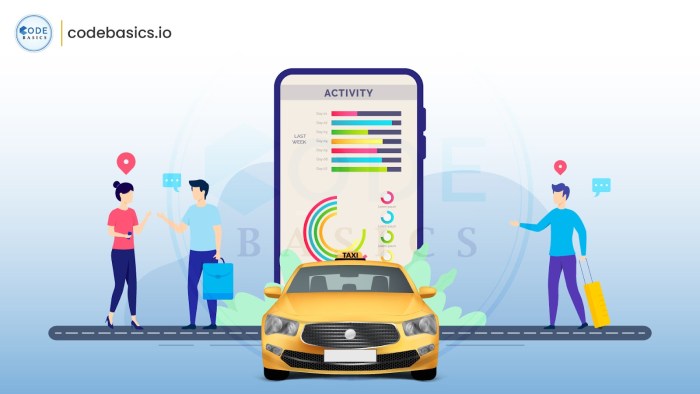
Uber leverages a sophisticated suite of analytical tools and techniques to transform raw data into actionable insights. This data-driven approach allows them to optimize various aspects of their operations, from matching riders with drivers to predicting demand and enhancing safety. Their ability to analyze vast datasets enables them to make informed decisions, adapt to changing market conditions, and continuously improve the user experience.
Analytical Tools and Techniques
Uber employs a diverse range of analytical tools and techniques, including statistical modeling, machine learning algorithms, and data visualization. These tools are used to identify patterns, trends, and correlations within the massive datasets they collect. The choice of tool often depends on the specific task, whether it’s forecasting demand, optimizing routes, or detecting fraud. Sophisticated algorithms are integral to processing and interpreting this information, enabling Uber to make precise predictions and efficient decisions.
Machine Learning Applications
Machine learning algorithms play a crucial role in Uber’s operations. Their predictive capabilities are particularly valuable for tasks like demand forecasting, route optimization, and fraud detection.
- Demand Forecasting: Uber utilizes machine learning models to predict the demand for rides in different locations and time periods. These models consider various factors such as time of day, day of the week, weather conditions, and special events to anticipate surge pricing needs. For example, a model might predict a high demand for rides during rush hour in a specific neighborhood, allowing Uber to pre-position drivers to meet the need and avoid service disruptions.
Uber’s data-driven approach is fascinating, but have you seen the crazy fix for the Windows 11 recall glitch? Windows 11 Recall Glitch The Fix You Wont Believe It’s mind-boggling how much data is used to optimize routes and predict demand. Ultimately, this highlights how Uber’s complex data systems enable their services to function efficiently.
- Route Optimization: Machine learning algorithms are used to optimize driver routes, minimizing travel time and fuel consumption. These algorithms consider real-time traffic conditions, driver location, and ride requests to suggest the most efficient routes. This not only saves time but also reduces fuel costs and environmental impact.
- Fraud Detection: Sophisticated machine learning models analyze ride data to identify fraudulent activities, such as fake rides or driver impersonation. The algorithms identify anomalies and suspicious patterns in driver and passenger behavior, flagging potentially fraudulent activities for further review. For example, a pattern of unusually high cancellation rates or unusually short trips in a particular area could trigger an alert for investigation.
Pricing Strategies
Uber employs various analytical approaches to establish pricing strategies. Different methods are used to determine surge pricing, adjusting rates based on real-time demand.
- Traditional Statistical Modeling: Historical data and statistical models can be used to establish baseline pricing. This method analyzes past demand patterns to forecast expected demand and set initial pricing levels.
- Machine Learning-based Pricing: Machine learning algorithms can analyze a wider range of factors, including real-time demand, historical data, and external factors like weather conditions or events, to dynamically adjust pricing. This allows for more responsive pricing that adapts to changing market conditions and maximizes revenue while ensuring fair pricing for users.
Driver Performance Evaluation
Evaluating driver performance is critical for maintaining a high level of service. Uber uses a combination of analytical approaches to measure and assess driver efficiency and quality.
- Performance Metrics: Key metrics, such as average trip duration, on-time performance, customer ratings, and driver compliance with policies, are tracked and analyzed. These metrics provide a comprehensive view of a driver’s performance and help identify areas for improvement.
- Machine Learning-based Analysis: Machine learning algorithms can identify patterns and anomalies in driver behavior, such as frequent cancellations or delays. This helps in identifying drivers who may be struggling with certain aspects of the job or who might require support.
Data-Driven Decision Making
Uber’s success hinges on its ability to leverage vast amounts of data to refine its services and adapt to a constantly evolving market. This data-driven approach enables them to optimize operations, personalize user experiences, and anticipate future trends. By analyzing everything from user preferences to traffic patterns, Uber can make informed decisions that enhance the overall platform’s effectiveness.The insights gleaned from this data analysis are instrumental in shaping Uber’s strategies.
This translates into a variety of improvements, from enhancing the ride-sharing experience to developing new revenue streams and expanding into new markets. Essentially, Uber transforms raw data into actionable intelligence, allowing them to continually improve and adapt.
Ride-Sharing Optimization, How uber uses data
Uber uses data to optimize its ride-matching algorithms, ensuring that drivers are dispatched to riders efficiently and effectively. By analyzing factors like traffic conditions, demand fluctuations, and driver availability, the system dynamically adjusts dispatching strategies, leading to reduced wait times for both riders and drivers. This optimized dispatching reduces overall travel time and improves the overall user experience.
Real-time adjustments to these factors allow for near-optimal service in diverse metropolitan areas.
Dynamic Pricing
Uber’s dynamic pricing strategy, based on real-time demand and supply, is a prime example of data-driven decision-making. Factors such as time of day, location, and event occurrences are considered. The system adjusts pricing to match the fluctuations in demand, ensuring that riders and drivers are compensated appropriately for the current conditions. This strategy helps to mitigate surge pricing when demand significantly outpaces supply.
The dynamic pricing system provides fair compensation for both drivers and users.
Driver Support
Data analysis provides valuable insights for driver support initiatives. By monitoring driver performance, identifying potential issues, and offering tailored support, Uber aims to foster a positive and productive driver community. This might involve analyzing driver routes, providing personalized recommendations for optimized routes, and offering training programs based on data-driven insights. This approach ensures drivers have the resources and information to succeed on the platform.
New Feature and Product Development
Uber leverages data to identify user needs and trends, which directly influences the development of new features and products. Analysis of user interactions, feedback, and preferences is used to create new products or enhance existing ones. Data analysis identifies opportunities for improvement and guides the development process, ensuring new features align with user needs.
Adapting to Market Conditions and User Preferences
Uber constantly monitors market trends and user preferences to adapt its services accordingly. Analyzing market data enables Uber to understand shifts in demand, preferences, and emerging technologies. This data-driven approach allows the company to proactively adjust its offerings, maintaining a competitive edge and ensuring its platform remains relevant to its users. Analyzing user data and feedback is a vital part of maintaining a successful platform.
Data Visualization and Reporting
Uber’s success hinges on its ability to transform complex data into actionable insights. Effective data visualization and reporting are crucial for conveying these insights to various stakeholders, from executives strategizing about market expansion to engineers troubleshooting technical issues and drivers optimizing their routes. Clear and compelling visuals allow everyone to understand the data’s implications and make informed decisions.
Stakeholder-Specific Reporting
Uber tailors its reports to meet the unique needs of different stakeholders. Executives receive high-level summaries focusing on key performance indicators (KPIs) like revenue growth, market share, and user acquisition. These summaries often use dashboards to visualize trends over time, highlighting areas of success and potential challenges. Engineers, on the other hand, need detailed information about system performance, such as ride request latency, driver availability, and platform uptime.
Their reports often include interactive graphs and maps, allowing them to drill down into specific areas or time periods. Driver reports provide insights into their individual performance, including earnings, trip frequency, and average trip duration, allowing them to make informed decisions about their work patterns.
Uber’s data analysis is pretty fascinating, really. They use tons of data to optimize everything from ride requests to driver assignments. But, if you’re wondering if Disney’s Moana 2 is streaming now, check out this resource Is Moana 2 Streaming Now?. Knowing whether it’s available on a streaming service might influence your data-driven entertainment choices, just like Uber uses data to make decisions about where to send cars.
Ultimately, data is key in both cases.
Key Performance Indicator (KPI) Dashboards
Data visualization plays a critical role in monitoring KPIs. Uber utilizes dashboards to track critical metrics in real-time. For example, a dashboard might display the total number of rides completed in a specific city, the average trip duration, and the percentage of on-time arrivals. These dashboards are interactive, allowing users to filter data by various criteria, such as date range, location, and driver type.
This enables a deeper understanding of performance trends and facilitates targeted interventions where necessary. Furthermore, these dashboards often incorporate alerts, which automatically notify stakeholders about significant deviations from expected performance.
Visual Representation Methods
Uber leverages a variety of visual representation methods to communicate data insights. For instance, line graphs effectively depict trends in ride demand over time, while bar charts are used to compare performance across different regions. Scatter plots can show correlations between variables like trip distance and fare amount. Maps are essential for visualizing geographic patterns, such as ride frequency in specific neighborhoods or driver distribution across a city.
Interactive elements within these visualizations allow users to explore the data in detail, gain deeper insights, and make more informed decisions. Furthermore, the use of color-coding and clear labeling enhances understanding and reduces ambiguity.
Example: Ride Demand Dashboard
A sample ride demand dashboard might include:
- A line graph showing daily ride requests in a particular city over the past month.
- A map highlighting areas with high and low demand, enabling proactive resource allocation.
- A table showcasing the average ride duration per day and time of day, identifying potential congestion points or service bottlenecks.
This type of detailed visualization allows for proactive adjustments in driver allocation, resource optimization, and service enhancements to better meet fluctuating demand. Such reports are crucial for maximizing efficiency and improving the user experience.
Ethical Considerations
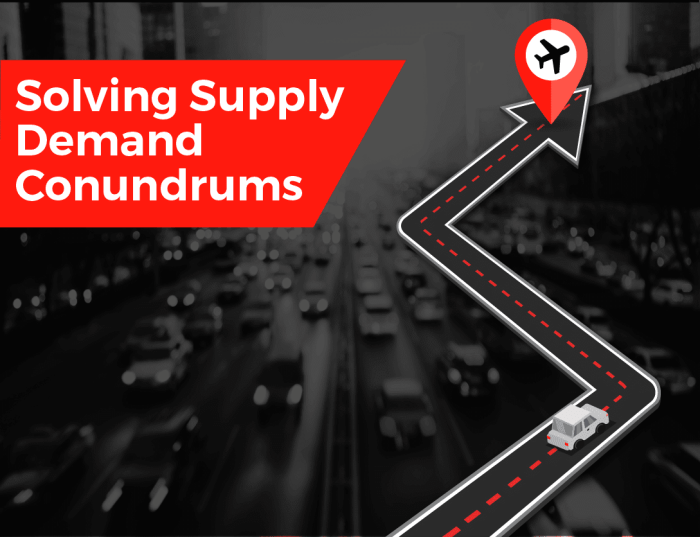
Uber’s success hinges on its ability to collect and utilize vast amounts of data. However, this data-driven approach raises critical ethical concerns regarding user privacy, potential biases, and the responsibility of the platform in managing its information. Navigating these complexities is essential for Uber to maintain public trust and ensure fair operations.
Ethical Implications of User Data
The collection and use of user data in ride-sharing services present several ethical dilemmas. For instance, the location data collected from riders and drivers can be sensitive, raising concerns about potential misuse or breaches of personal privacy. Moreover, the data collected might be used to create detailed profiles of individuals, potentially leading to discrimination or targeted advertising. Finally, the sheer volume of data collected can raise concerns about data security and the potential for misuse.
Uber’s Approach to Data Privacy and User Consent
Uber’s approach to data privacy and user consent is a critical component of its ethical framework. Uber has implemented various measures to protect user data, including encryption and access controls. Transparency in data collection practices and clear user consent mechanisms are also key elements. For example, Uber’s terms of service clearly Artikel the types of data collected and how it is used, allowing users to make informed decisions about their participation.
Potential Biases in Data and Their Impact
Data collected by Uber, like any dataset, can contain biases reflecting existing societal inequalities. For example, if a disproportionate number of drivers in a particular region are from a certain demographic group, this could skew data on ride-request patterns or driver performance. These biases can manifest in algorithmic decisions, leading to unfair or discriminatory outcomes. For example, if a machine learning algorithm is trained on data with existing biases, it might perpetuate those biases in its predictions, leading to unequal treatment of riders or drivers.
Careful consideration and mitigation strategies are necessary to identify and address these potential biases in the data.
Mitigating Potential Bias
Addressing potential biases in data requires a multifaceted approach. First, Uber must proactively identify potential sources of bias in their data collection and analysis processes. Regular audits of the data and the algorithms used to analyze it are critical. Second, data scientists must actively seek to understand and account for potential biases when building algorithms. This includes using diverse datasets and incorporating fairness metrics into the design process.
Finally, Uber should have mechanisms in place to monitor the impact of their algorithms and make adjustments as needed. This could include collecting feedback from users and drivers, and conducting regular impact assessments. In essence, continuous monitoring and improvement are essential to mitigating the impact of potential biases.
Impact on Drivers and Passengers
Uber’s data-driven approach significantly impacts both drivers and passengers. By analyzing vast amounts of data, Uber can optimize ride-matching algorithms, improve service reliability, and ultimately enhance the overall experience for everyone involved. This dynamic interplay between data and user experience is a key aspect of Uber’s success.Data analysis is crucial in understanding the needs and preferences of both drivers and passengers.
This understanding allows Uber to tailor services to better suit these needs, creating a more efficient and satisfying experience for everyone. The insights gleaned from data directly affect the economic opportunities for drivers and the satisfaction levels of passengers. Data-driven decisions contribute significantly to the safety and efficiency of rides.
Driver Earnings and Satisfaction
Uber’s data-driven approach directly impacts driver earnings. Real-time adjustments to pricing and surge pricing, based on demand and supply, can increase income potential for drivers. The platform analyzes historical data on driver behavior and location preferences to improve the efficiency of matching drivers to rides. Furthermore, data analysis helps to identify trends and patterns in driver demand and supply, allowing for proactive adjustments in service areas.
Data can also identify potential issues impacting driver earnings, such as high traffic congestion in specific areas or low demand during certain hours. This allows for targeted interventions to mitigate these issues.
Passenger Satisfaction and Experience
Data analysis plays a significant role in enhancing passenger satisfaction. Algorithms using historical data about ride times, driver ratings, and passenger feedback optimize ride-matching, ensuring passengers are connected with suitable drivers in a timely manner. This contributes to a more positive passenger experience. Furthermore, data analysis can help identify areas where the ride experience can be improved, such as issues with ride cancellation rates or delays.
This information can be used to refine processes and ultimately enhance the overall experience. For example, data analysis might reveal that passengers in a particular region are consistently rating their experiences lower due to long wait times. This would allow Uber to explore solutions, such as increasing the number of available drivers in that area during peak hours.
Safe and Efficient Rides
Data analysis is integral to ensuring safe and efficient rides. The platform analyzes real-time data on traffic conditions, driver behavior, and passenger feedback to identify potential safety risks. This information helps to improve route optimization and potentially avoid high-risk areas. Driver behavior data, including speed, braking patterns, and acceleration, are analyzed to identify potential safety issues and provide appropriate feedback to drivers.
This data analysis allows for proactive measures to improve safety and efficiency, reducing potential hazards and delays. Uber can also use data to predict potential issues and adjust its services proactively. For instance, if data suggests a high probability of traffic congestion on a particular route, Uber can adjust pricing or provide alternative routes to passengers, minimizing delays.
Future Trends in Data Usage
Uber’s continued reliance on data analysis will be instrumental in shaping its future trajectory. The platform is already heavily data-driven, but future developments will likely involve even more sophisticated applications, leading to enhanced user experiences, improved operational efficiency, and a deeper understanding of the ever-evolving transportation landscape. This includes anticipating evolving passenger needs and optimizing driver earnings through data-driven insights.The future of Uber’s data usage will be deeply intertwined with emerging technologies.
Real-time data processing, advanced analytics, and machine learning will become increasingly crucial for optimizing services, predicting demand, and personalizing experiences for both drivers and passengers. The integration of these technologies will likely lead to a more seamless and efficient ride-hailing experience.
Predictive Modeling for Dynamic Pricing and Demand Forecasting
Data analysis is already used for pricing adjustments, but future applications will likely involve more sophisticated predictive modeling. This includes incorporating real-time factors such as weather conditions, traffic patterns, and event schedules to dynamically adjust pricing. More sophisticated algorithms will also predict demand fluctuations with greater accuracy, allowing Uber to optimize resource allocation and potentially mitigate surge pricing in certain situations.
Personalized User Experiences
Uber can further refine the user experience through personalized recommendations and services. Data analysis can be used to tailor suggestions for routes, destinations, and even payment options. This personalization extends to drivers as well, offering them insights into high-demand areas and optimal driving routes. For example, a driver could receive real-time data on expected traffic delays and adjust their route accordingly.
Integration of Emerging Technologies
The rise of technologies like AI and machine learning will revolutionize data collection, storage, and analysis. AI-powered systems can automate tasks, identify patterns, and generate insights from vast amounts of data with unprecedented speed and accuracy. Machine learning algorithms can also predict maintenance needs for vehicles, optimizing maintenance schedules and minimizing downtime. These improvements will lead to a more efficient and responsive service.
Enhanced Safety and Security
Data analysis can be leveraged to identify and prevent potential safety risks in real-time. For instance, anomaly detection algorithms can flag unusual driver behaviors or passenger interactions, alerting authorities and providing real-time safety alerts. This enhanced security will contribute to a more secure and reliable ride-hailing experience. Furthermore, real-time data can be used to track and analyze accident patterns, providing insights to improve safety measures and prevent future incidents.
Data-Driven Optimization of Operational Processes
Uber can use data analysis to optimize its operational processes in real-time. This can involve predicting maintenance needs for vehicles, optimizing driver assignments, and dynamically adjusting service availability based on demand. Predictive models can be used to anticipate maintenance needs, minimizing vehicle downtime and maximizing operational efficiency.
Ultimate Conclusion
In conclusion, Uber’s data-driven approach is a powerful example of how technology can be leveraged to optimize services and enhance user experiences. The constant flow of data, from user activity to external factors, fuels a dynamic system that constantly adapts to changing market conditions and user preferences. While ethical considerations are paramount, Uber’s commitment to using data responsibly paves the way for a future where transportation is even more efficient, convenient, and safe.

